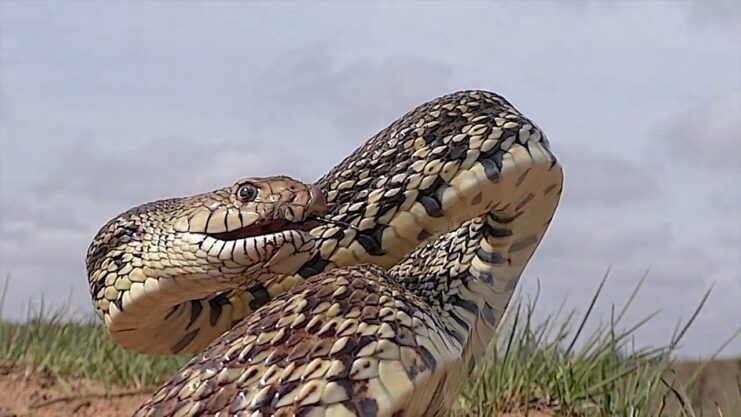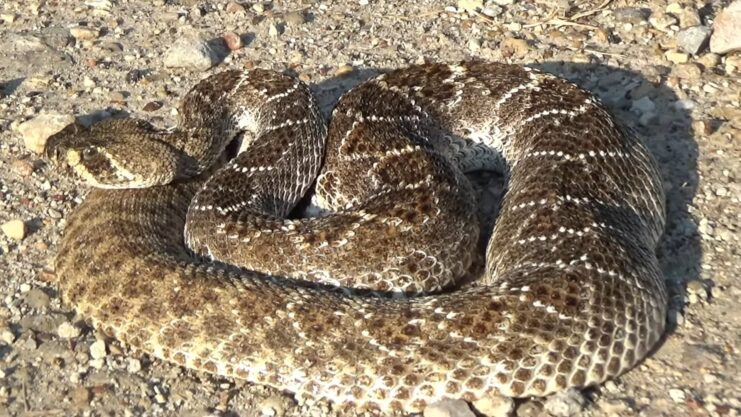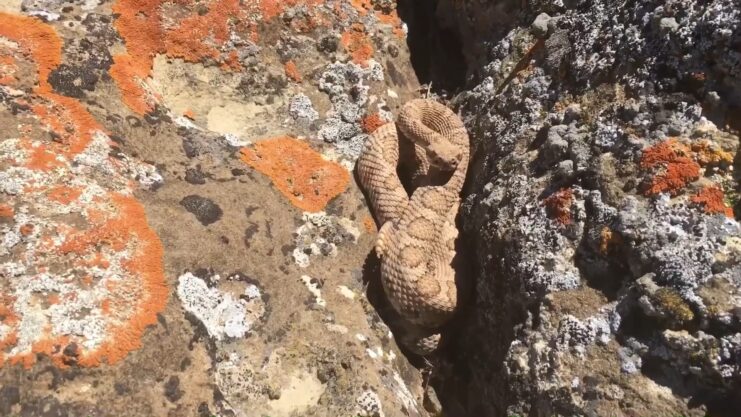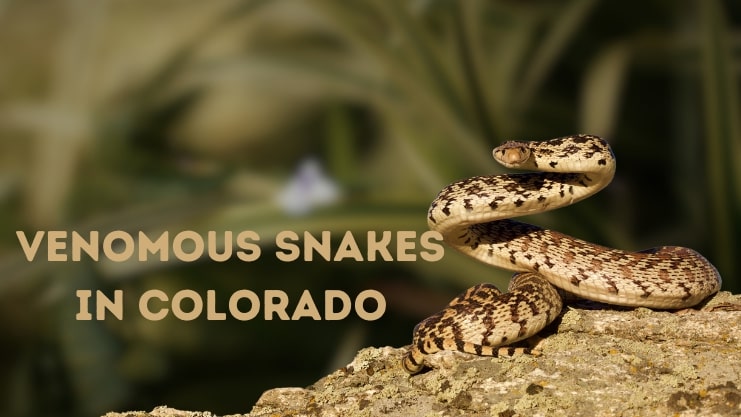Welcome, intrepid explorers, to the enchanting world of venomous snakes in Colorado! Prepare to embark on a wild journey through the Centennial State, where slithering danger lurks amidst stunning landscapes.
From the rugged peaks of the Rockies to the sun-soaked plains, Colorado hosts a surprising cast of venomous serpents that add a touch of excitement to its already thrilling outdoors. Join us as we unravel the mystery of these reptilian troublemakers, uncover their captivating adaptations, and discover the quirky tales behind their venomous bites.
The Venomous Trio
Colorado’s venomous snakes include the Prairie Rattlesnake, the Western Massasauga, and the Midget Faded Rattlesnake. Each of these species has unique characteristics that set them apart.
1. Prairie Rattlesnake

The Prairie Rattlesnake (Crotalus viridis) is the largest venomous snake in Colorado. It inhabits grasslands, shrublands, and the Colorado River area. This snake is known for its broad triangular head, elliptical pupils, heat-sensing pits between the eyes and nostrils, and distinctive rattle at the end of its tail.
2. Western Massasauga

The Western Massasauga (Sistrurus tergeminus) is a smaller rattlesnake species found in the dry areas of southeastern Colorado. Its coloration is gray to light brown with dark brown blotches on the back. Like the Prairie Rattlesnake, it has a thick body, a large triangular head, heat-sensing pits, elliptical pupils, and a rattle on the tail.
3. Midget Faded Rattlesnake

The Midget Faded Rattlesnake (Crotalus oreganus) is a subspecies of the Western Rattlesnake. It can be found in mountainous areas, woodlands, and grasslands. Its coloration varies from tan and yellow to rarely pinkish with faint oval blotches. This snake is active during the day or night and feeds on small mammals, birds, reptiles, amphibians, and insects.
| Species | Average Length | Habitat | Diet | Unique Characteristics | Danger to Humans |
|---|---|---|---|---|---|
| Prairie Rattlesnake | 3.3 – 5 feet | Grasslands, Shrublands, Colorado River area | Small mammals, birds, reptiles | Broad triangular head, elliptical pupils, heat-sensing pits, tail rattle | Venomous, but usually only bites when threatened |
| Western Massasauga | 14 – 36 inches | Dry areas of southeastern Colorado | Small mammals, lizards, other snakes | Gray to light brown coloration, dark brown blotches, thick body, large triangular head, tail rattle | Venomous, but less aggressive than other rattlesnakes |
| Midget Faded Rattlesnake | Up to 6 feet | Mountainous areas, Woodlands, Grasslands | Small mammals, birds, reptiles, amphibians, insects | Tan, yellow, or pinkish coloration, faint oval blotches, active during day or night | Venomous, bites can be severe but are rare |
Non-Venomous Colorado Snakes
In addition to the venomous species, Colorado is home to numerous non-venomous snakes. These include the Western Yellow-Bellied Racer, the Great Basin Gopher Snake, the Blackneck Garter Snake, and the Colorado Bullsnake. These snakes play a vital role in the ecosystem by controlling the rodent population.
| Species | Average Length | Habitat | Diet | Unique Characteristics | Role in Ecosystem |
|---|---|---|---|---|---|
| Western Yellow-Bellied Racer | 20 – 65 inches | Sunny areas such as grasslands and mountains | Insects, small mammals, birds, reptiles, amphibians | Fast-moving, blue-gray or brown bodies with a yellow belly | Helps control populations of small animals |
| Great Basin Gopher Snake | 4 – 5 feet | Western Slope of Colorado | Rodents, birds, eggs | Resembles a rattlesnake but lacks a rattle, hisses when threatened | Important for rodent control |
| Blackneck Garter Snake | 16 – 43 inches | Denver and Fort Collins areas | Earthworms, slugs, fish, amphibians | Black stripe along their collar and olive coloring, releases a foul-smelling odor when handled | Helps control populations of small animals |
| Colorado Bullsnake | Up to 8 feet | Open areas like grasslands | Rodents, birds, eggs | One of the largest snakes in Colorado, often mistaken for a rattlesnake due to similar coloration | Vital for rodent control |
Safety Measures
Awareness and Prevention
- Know Your Snakes: Familiarize yourself with the types of venomous snakes in your area. Learn about their habitats and behaviors.
- Watch Your Step: Be cautious when stepping over fallen logs and rock outcrops. Snakes often rest in these areas.
- Night Safety: Avoid wandering around at night, especially near water sources, as snakes are more active during this time.
- Keep Your Yard Clean: Regularly clean your yard. Tall grass, piles of wood, and clutter can attract rodents, which in turn attract snakes.
Proper Footwear and Clothing
- Footwear: Always wear sturdy boots when hiking or working in areas where snakes may be present.
- Clothing: Wear long pants and gloves when handling brush and debris.
Respecting Their Space
- Keep Distance: If you encounter a snake, maintain a safe distance. Most snakes will not attack unless provoked.
- Do Not Handle: Never try to handle or kill snakes. This is when most snake bites occur.
In Case of a Snakebite
- Stay Calm: Panic can increase your heart rate, which will spread the venom faster.
- Seek Immediate Medical Help: Call emergency services right away. Try to describe the snake to medical personnel.
- Do Not Attempt Self-Treatment: Do not try to suck out the venom or apply a tourniquet. These methods are ineffective and can cause more harm.
Conclusion
Remember, if you are fortunate enough to cross paths with these venomous residents, maintain a respectful distance and observe their remarkable beauty from afar. Let their presence serve as a reminder that nature’s intricacies are to be cherished and protected.
As you explore the breathtaking landscapes of Colorado, may the memory of these slithering wonders ignite a desire to preserve and celebrate the remarkable diversity that makes the state truly exceptional.
Related Posts:
- Visit the 5 Best Camping Site in Colorado 2024:…
- Uncover the Winning Secrets: Top Online Slot Features
- Exploring Venomous Snakes in Florida: A Serpentine Paradise
- Unveiling Venomous Snakes in Georgia: An Exciting…
- 9 Biggest fish in Colorado 2024 - Hooked on Adventure
- 4 Most Venomous Snakes in Arizona - Stay Safe on…




















